Tips for getting better grades with PSA
Being an avid PSA-graded card collector for over ten years and having submitted over 1,000 cards for grading. I have developed a few tricks to increase your chances of getting higher grades when submitting your cards to PSA. Although I have no guarantee that these tips work, I have received many PSA 10 gem mint grades that I have submitted myself. Some tips may be common sense to some, while others may find them useful.
Please keep in mind that I in no way guarantee these tips to work. They are merely advice and a topic for discussion. Please feel free to comment below in the comments section on any tips and tricks you may have!
#1. Inspect Your Cards With a Magnifying Lamp
PSA uses the latest technology to catch flaws like re-coloring, surface scratches, reprints, fraudulent autographs, cutting, etc. To inspect your cards on the level that PSA does, you need things like a jeweler’s loupe, a black light, and a magnifying lamp. Especially if you plan on investing a lot of money into the hobby, having multiple submissions a year. Check out my article on the Top 10 Magnifying Lamps For Inspecting Your Cards for a list of options.
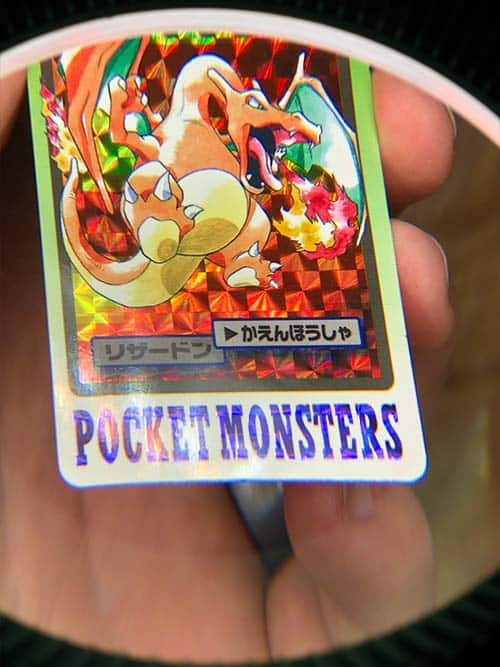

High-grade cards have the following:
If you want to learn more about grading sports cards, check this article out.
- Four Perfectly Sharp Corners
- Sharp focus (non-blurry images)
- Free of staining of any kind (fingerprints, water stains, sun spots)
- Centered front – not to exceed 55/45 to 60/40 percent
- Centered back – not to exceed 75/25 percent
- Minor print imperfections
#2. Use brand new penny sleeves and Grading Candidate Holders

Using brand-new penny sleeves and grading candidate holders, you are forced to remove the cards from the old, possibly discolored, sticky ones. Using old sleeves could also prevent you from catching a fingerprint smudge or printing stain.
This same effect can be applied when the graders pull your cards to inspect and grade them. The sleeves are named penny sleeves because they roughly cost a penny. The cost of swapping out the old sleeves for brand-new ones is practically non-existent. The reward will pay off tenfold if this leads to higher grades. I suggest swapping out any old or oversized sleeves on the cards you buy online or in stores, regardless if you’re going to have them graded.
What about Jerseys or Patch Cards?
If you have a thicker card, you must submit them in a thicker Toploader. If you do not know what size to purchase, click the link below, print the page, and hold your card up to the individual lines. Cards with a thickness of 108 pt and up need to be shipped in a top loader. Shop these on the supplies page.
#3. Use post-it flags on your cards.
Have you ever attempted to pull a card that is deep down inside a Card Saver out? Doing it once may not seem like an issue but imagine doing it hundreds of times daily. Your fingers can get pretty beat up. When submitting your cards, you want to make it as easy as possible for the graders. Pick up these post-it notes I use.
Don’t just insert the cards in the holders.
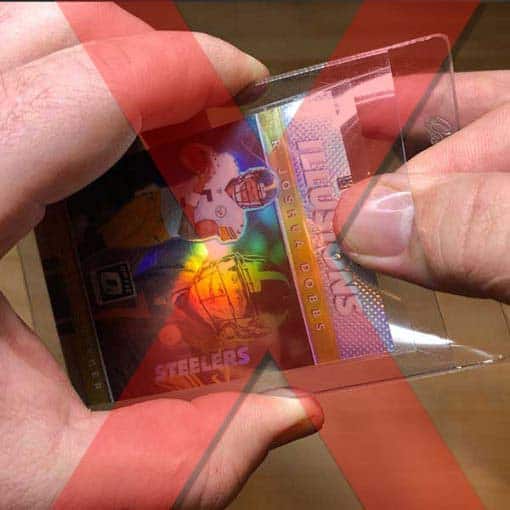
Use Post-it Flags for easy removal.
Try using these Post-it flags on your cards to allow for easy removal. They stick to the penny sleeve and hold great! For under $10, you can make the PSA graders’ job a little easier and possibly help land higher grades. Be sure and use a penny sleeve whenever submitting your cards. Do not stick these Post-it flags to a naked card; that’s a bad idea.

#4. Put Your Weakest Card First
It doesn’t take a 20-year collector to know if PSA handed out gem mint 10 grades like candy on Halloween, the value and collectability of the PSA 10s would go down. I use this assumption when submitting my cards and executing the “weakest card on top” strategy.
What is a Weak Card?
The card you feel will receive the weakest grade is your weakest card. A weak card for me is typically an auto, thick rookie patch, an early refractor card, or a vintage card. They are cards you want to get PSA graded and slabbed but are not in Gem mint condition.
Creating a Diversion
This tip creates a sort of “diversion” for the person grading your cards. When they start grading a brand new submission, they may need to give away at least one grade other than a 9 or a 10.
If you start by getting that low grade out of the way, you could see back-to-back gem mint 10’s following it. When the grader sees above-average cards following, they grant higher grades.
Back To Back Gem Mint 10’s
I’ve had multiple occurrences when the first card got a grade less than 10 it was followed by back-to-back Gem Mint 10’s. This happens because I place my weakest card on top, setting low expectations for the grader.
Not 100% Successful
PSA does not publicly display every submission or the grades those cards receive. Only the individual buyer can see this information. So it is impossible to tell if this tip works. I have used this technique many times, and so far, it has worked for me roughly 70% of the time.
| Line # | Item # | Cert # | Grade | Description | Type |
|---|---|---|---|---|---|
| 1 | 1 | XXXXXXXX | MINT 9 | 2016 Panini Donruss Optic 158 Christian Hackenberg Autograph-Holo | Card |
| 2 | 1 | XXXXXXXX | GEM MINT 10 | 2016 Panini Donruss Optic 156 Carson Wentz | Card |
| 3 | 1 | XXXXXXXX | GEM MINT 10 | 2016 Panini Donruss Optic 172 Jared Goff | Card |
| 4 | 1 | XXXXXXXX | GEM MINT 10 | 2016 Panini Donruss Optic 32 Von Miller Holo | Card |
| 5 | 1 | XXXXXXXX | GEM MINT 10 | 2016 Panini Donruss Optic 27 Jason Witten Orange | Card |
#5. Have An Organized Submission Form
While creating your submission form, remember that someone will have to read it. Use common sense when putting your cards in order. Order them by set, then by the player. Putting the same cards together. Look at the form above for an example. Notice how I Put all the 2016 Optic cards together, grouping the same cards within that category. The Tom Brady holos and Legends of the Fall are grouped.
How will this help me get higher grades?
When all the cards from the same set are in order, the graders can create the labels faster. Doing this will make the process much smoother for you and PSA. So take your time when putting your submission together.
Using common sense could pay off in the end. I have noticed higher grades and quicker turnaround times on my PSA orders since I sent organized and well-thought-out submissions.
Organized

Notice how the organized image has all the cards in order by the player, set, and year. The unorganized submission has random cards in no particular order. PSA explains the grading process below on its website.
PSA Submission Process
Each order is distributed to graders based on their particular skills and expertise. For example, a 1956 Topps Mickey Mantle would not be distributed to one of their modern card specialists. While the graders are generally trained to handle cards from virtually all eras, they are assigned cards based on their strengths. In addition, the sheer number of graders assigned to each card can vary depending on the type of card submitted. In all cases, at minimum, two graders are assigned to every card.
How does the grading process work?
If you were to submit a 1965 Topps Willie Mays – this is how the grading process would work: Each grader receives the order, and enters the order number into the computer. Once that is done, the contents of that order will appear on the PSA grading screen.
Grader #1
The first grader will then enter his grade for the card in question (and for each card within the order until the order is completed if there is more than one card) and close the order on his screen.
Grader #2
Once that is done, and after the order redistribution, Grader #2 will do the same – not knowing the opinion of the first grader on any of the cards within that order.
Conflicting Grades
If their grades match in the computer, the card would eventually reach a 3rd grader for grade verification. If the opinion of the first two graders does not match, that card will be assigned to a 3rd grader whose opinion is required to break the tie.
As with the first example, the card would still be assigned to another grader for verification (a 4th grader in the process) to ensure the grade is accurate and consistent with our standards.
PSA grades cards carefully
As you can see, there is a lot of time and effort on ensuring the most accurate grade is made for each card. Taking the time and care to organize your submission form could make it easier for the graders and create a smoother process.
#6. Throw Some dummy cards in your submission
A card with a noticeable imperfection, such as less-than-perfect centering, edge chipping, a soft corner, or surface scratching, is a dummy card. I call them dummy cards because they are expendable. If I have a bunch of cards from the same set, which I typically do, then I throw the expendable card first.
This isn’t necessarily the weakest card, it’s just a noticeable imperfection you are willing to sacrifice the grading fee. A Tom Brady, Mike Trout, or Ben Simmons off-centered card makes great dummy cards.
Submitting cards from the same set with similar characteristics will allow the graders to compare the cards. Placing a dummy card on top will set the bar low. When the grader inspects the remaining cards in the set, his or her expectations will be low. Theoretically, resulting in higher grades. I have numerous submissions where the first card received a mint 9 grade and was followed by back-to-back 10s. Try it out yourself, and let me know if this works!
#7. Be the First One to Submit!
I have looked at the PSA population report countless times. While browsing, I noticed how the first cards submitted in a set receive Gem Mint 10 grades. I recently pulled a 2017 Donruss Optic football population report to show an example. If you view the attached image below, you’ll notice, highlighted in yellow, that 17 cards in the 2017 Donruss Optic set have been submitted for grading so far. Of those 17 cards, 17 have received Gem Mint 10 grades, with 6 of those 17 being autographs!
Is this just a coincidence, or is there a logical explanation?

I can pull multiple examples of this happening. Where the first 20 or so submissions get Gem Mint 10 grades. So that eliminates coincidence from the table.
Also, the backs of these cards are dark grey. We all know what dark borders mean, right? Evident chipping and printing imperfections. So, are all 17 of these cards in perfect gem mint condition, or was it the “early bird gets the worm” cause?
How about a logical explanation?
I have a few ideas of why the early bird gets the worm when it comes to being the first to submit a card in a set.
PSA wants you to submit to them!
If collectors notice that cards from a new set are all receiving Gem Mint 10 grades, they will start submitting, right? It worked on me. Most of the 2017 Leaf Metal Draft rookie autos were getting Gem Mint 10s. So I submitted 9 of the 2017 Leaf Metal Josh Dobbs autos that were, in my opinion, pristine. When my order was complete, I checked the results and saw that only three autos received 10s and the other six received 9’s. I was speechless.
So if you are one of the first to submit to a new set, you could get those 10s. This, again, is all speculation and opinion. There is no way of proving this works. I suggest you try it out for yourself. That is truly the only way to learn.
PSA likes to keep a healthy Gem mint to Mint ratio
Having more cards graded 10 on the market will decrease the value of the 10s. For example, in early March 2017, a non-rookie 2002 Sp Authentic Tom Brady PSA 10 sold for $657 at auction. Granted, this price may be the result of him winning his 5th Super Bowl a month prior, but because it was the first one on the market after he did, it reaped a huge sale price. Four cards sold before he won the 5th Super Bowl: $585 and $405 in the same month, and two sold for $16.50 and $11.16 in 2016.

Once collectors saw the high sale price for this common Tom Brady card, they started flooding them into PSA for grading. If you examine the cards in this set, you’ll notice how they have white fronts and backs. The cards are also made of smooth stock cardboard. These are all qualities high-grade cards have. The white borders prevent chipping, or edge imperfections and the smooth card stock prevents surface damage.
As of today, the PSA population report shows that out of (605) 2002 SP Authentic Tom Brady cards submitted, 504 have received gem mint 10 grades. If you bought a raw card for $10 and paid PSA $10 to grade it, your total investment is a mere $20.
So why pay $657 for a card when you can get it graded for only $20? Back in March 2017, the population report must have been entirely different.
Why such a price difference?
Due to numerous collectors paying over $100 for this card in a gem mint 10 case, my assumption is the Gem mint 10 to Mint 9 ratio was significantly different in March 2017. Since its peak, the price has dropped significantly to a more reasonable selling price of $35. Buying a raw card and submitting it for grading for practically nothing is a much more cost-effective way to add this card in PSA 10 format to your collection.
If you were to submit this exact card today, you might not receive that guaranteed 10, as the population report suggests. I firmly believe PSA pays close attention to its pop report. If they notice too many 10’s being given to a high submission card in an attempt to maintain the rarity and value of a Gem Mint 10, they may start “inspecting” them a little closer. Handing out Mint 9 and 8 grades will result in a more balanced population report.
This is speculation and in no way an attempt to question PSA’s integrity. I’m just making an observation and suggestions. If you are the first to submit a card in a set, your chances improve on receiving a high grade are.
PSA knows the value of their Gem mint 10’s
After a while, nm-mt 8 and mint 9 grades will show up. The graders have already viewed and inspected the cards and know what to look for. This makes their grades a bit tougher. They are also aware that, as I said before the value would go down if the market was flooded with only Gem Mint 10’s. They have to hand out other grades. It’s a business, after all. So be the first to submit and steal those gimme Gem Mint 10s!
Conclusion
Getting the grades you want is out of your hands. If everyone submitted cards and received Gem Mint 10’s, there would be no reason to get them graded. They would be a tamper-evident case that cannot be opened or closed. My tips and tricks are merely suggestions. They are not guaranteed to work. I do use these methods on every PSA submission I send to PSA. Sometimes they work, and sometimes I get grades that make no sense.
Overall I am thrilled with PSA and have received way more Gem Mint 10 grades than I ever imagined. I suggest you join their collector’s club, Gold or Platinum, and get those “free” submissions. This will allow you to experiment with your first submission while qualifying for bulk submissions. With a more significant sample, you can better understand what to look for after you get your first 100 or so graded cards.
From a young age, Matt dove deep into sports card valuation, turning to esteemed price guides like Beckett and Tuff Stuff. Eventually he extended to Pokémon, Magic: The Gathering, and Yu-Gi-Oh!. With a vision to sustain and nurture the hobby he loved, Matt established the ‘Graded Card Investor’ YouTube channel and website. He aims to foster a healthy community and offer invaluable insights to those entering the world of sports cards and TCGs. His depth of understanding, from the card market’s 2020 pinnacle to its 1990s valleys, is consistently fortified by meticulous research.
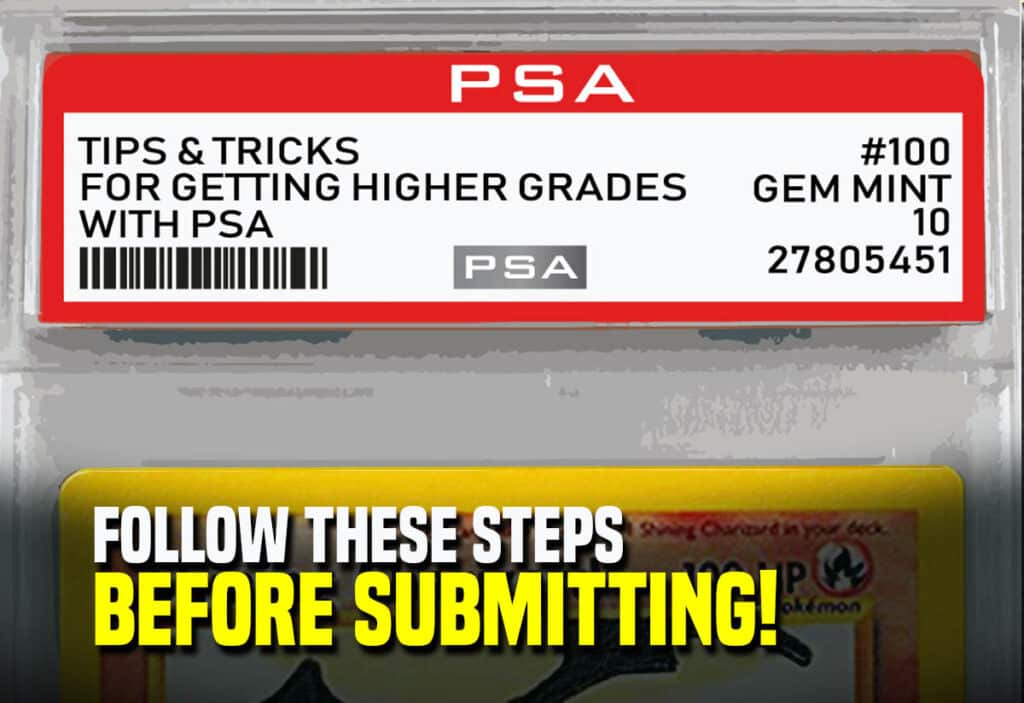

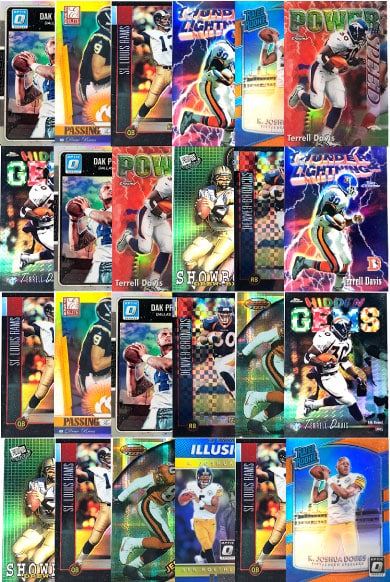

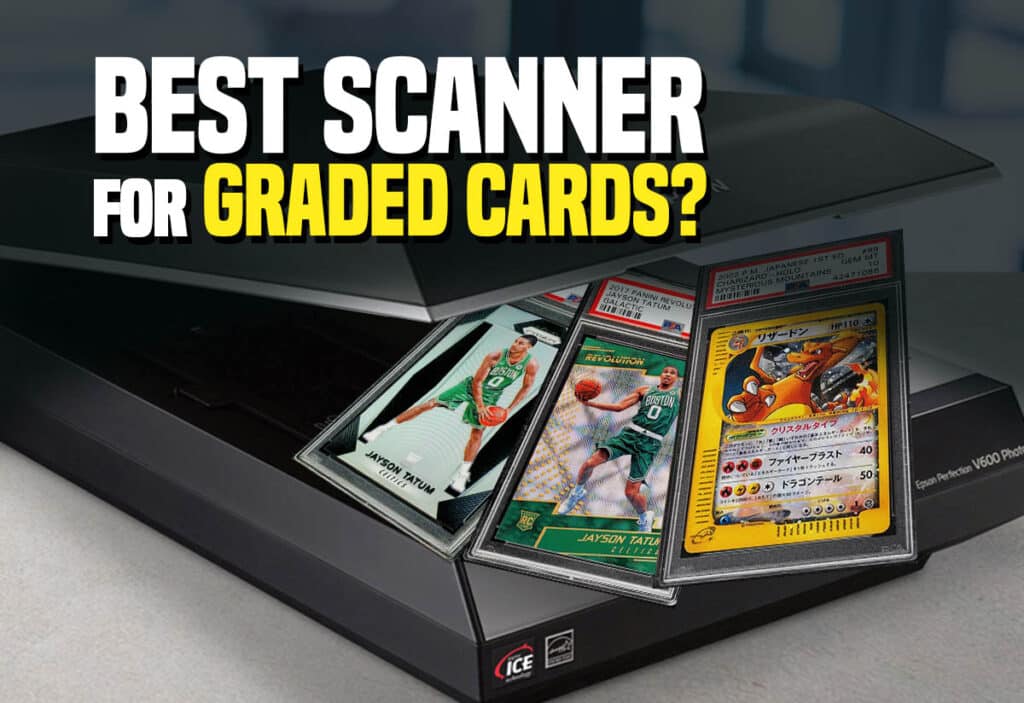
I’m not sure what promo code they’re asking for, I’ve never used one or heard of one. It might be for a seasonal thing or something, did you try their website? PSACARD.COM
What about psa promo codes when I sign up it asks for a promo code…do u have one please thanks a million.
Pingback: Sports Trading Cards Resource Guide: All Your Questions Answered - Only ∞ Greats
Pingback: How Much Does it Cost to Get a Card Graded? | PSA, BGS, HGA & More